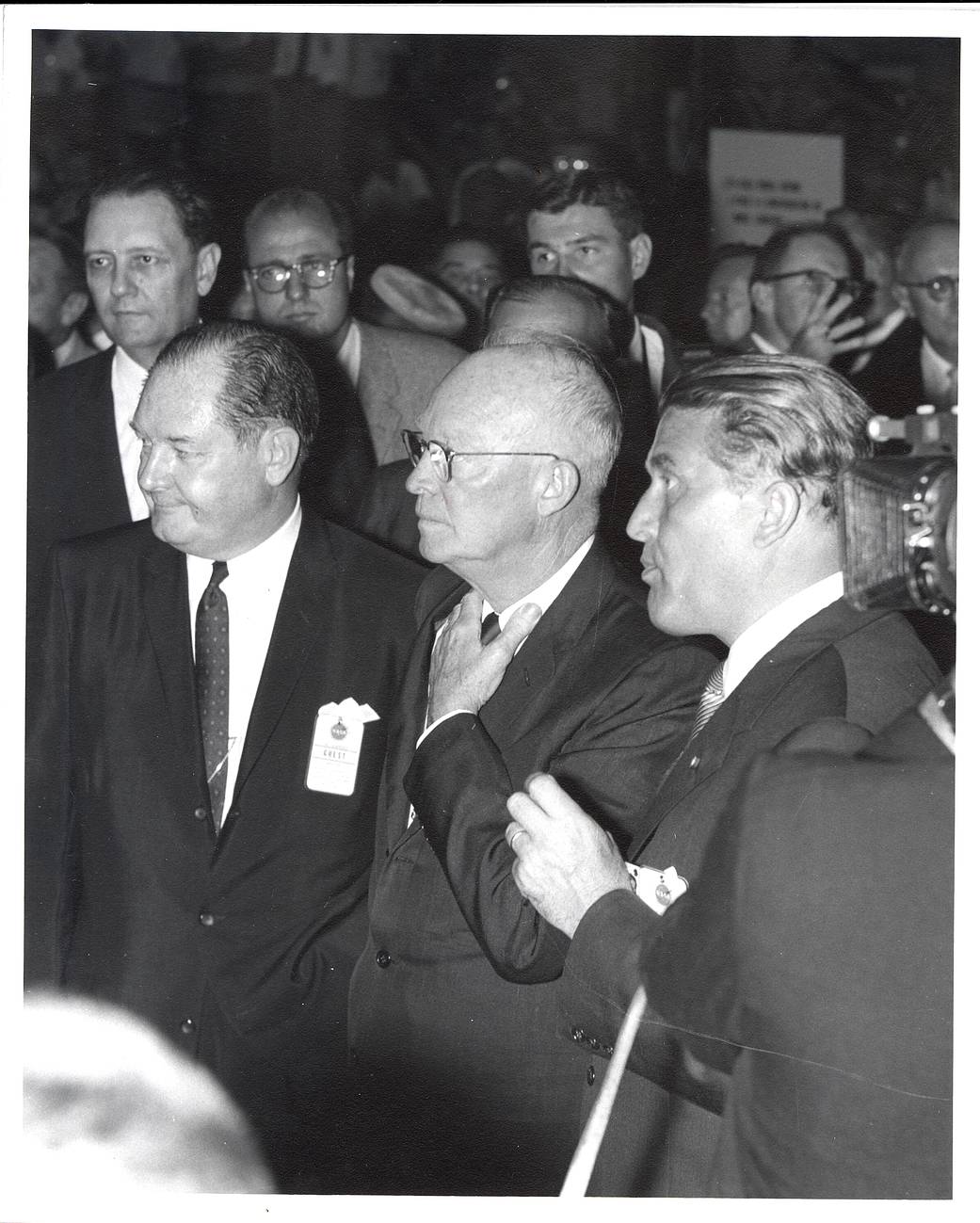
T. Keith Glennan
NASA Administrator (Aug. 19, 1958–Jan. 20, 1961)
Thomas Keith Glennan was the first Administrator of the National Aeronautics and Space Administration, formally established on October 1, 1958, under the National Aeronautics and Space Act of 1958.
While at NASA, Glennan was president-on-leave of the Case Institute of Technology, Cleveland, Ohio, which he had headed since 1947 and returned to following his NASA experience.
Born in Enderlin, North Dakota, on September 8, 1905, Dr. Glennan earned a degree in electrical engineering from the Sheffield Scientific School of Yale University in 1927. Following graduation, he became associated with the newly developed sound motion picture industry, and later became assistant general service superintendent for Electrical Research Products Company, a subsidiary of Western Electric Company. During his career he was studio manager of Paramount Pictures, Inc., and Samuel Goldwyn Studios, and was briefly on the staff of Vega Airplane Corporation.
Glennan joined the Columbia University Division of War Research in 1942, serving throughout World War II, first as Administrator and then as Director of the U.S. Navy’s Underwater Sound Laboratories at New London, Connecticut.
At the end of the war, Dr. Glennan became an executive of the Ansco Corp., Binghamton, New York. From this position he was called to the presidency of Case. During his administration, Case rose from a primarily local institution to rank with the top engineering schools in the nation. From October 1950 to November 1952, concurrent with his Case presidency, he served as a member of the Atomic Energy Commission.
Dr. Glennan was also very active in national and civic affairs. He was chair of the board of the Institute for Defense Analysis, and served on the board of the National Science Foundation and the Council on Financial Aid to Education. In Cleveland he took an important part in many civic activities.
Glennan also became a Fellow of the American Academy of Arts and Sciences, and member of Sigma Xi, Tau Beta Phi, and Chi Phi. He was also awarded several honorary degrees of Doctor of Science.
As NASA Administrator, Glennan presided over an organization that had absorbed the earlier National Advisory Committee for Aeronautics intact; its 8,000 employees, an annual budget of $100 million, and three major research laboratories—Langley Aeronautical Laboratory, Ames Aeronautical Laboratory, and Lewis Flight Propulsion Laboratory—and two small test facilities made up the core of the new NASA.
Within a short time after NASA’s formal organization, Glennan incorporated several organizations involved in space exploration projects from other federal agencies into NASA to ensure that a viable scientific program of space exploration could be reasonably conducted over the long-term. He brought in part of the Naval Research Laboratory in NASA and created for its use the Goddard Space Flight Center, Greenbelt, Maryland. He also incorporated several disparate satellite programs, two lunar probes, and the important research effort to develop a million-pound-thrust, single-chamber rocket engine from the Air Force and the Department of Defense’s (DOD) Advanced Research Projects Agency. In December 1958 Glennan also acquired control of the Jet Propulsion Laboratory, a contractor facility operated by the California Institute of Technology (Caltech) in Pasadena, California. In 1960 Dr. Glennan obtained the transfer to NASA of the Army Ballistic Missile Agency (ABMA), located at Huntsville, Alabama, and renamed it the Marshall Space Flight Center.
By mid-1960 Glennan had secured for NASA primacy in the Federal Government for the execution of all space activities except reconnaissance satellites, ballistic missiles, and a few other space-related projects, most of which were still in the study stage, that the DOD controlled.
Upon leaving NASA in January 1961, Dr. Glennan returned to the Case Institute of Technology, where he was continued to serve as president until 1966. During this period he helped to negotiate the merger of Case with Western Reserve University, creating Case Western Reserve University. After his retirement in 1966, Dr. Glennan spent two years as president of Associated Universities, Inc., a Washington-based advocate for institutions of higher learning.
A resident of Reston, Virginia, for twenty years after his retirement, he moved to Mitchellville, Maryland, in the late 1980s. He died at Collington Life Care Community in Mitchellville on April 11, 1995, after a stroke.





























